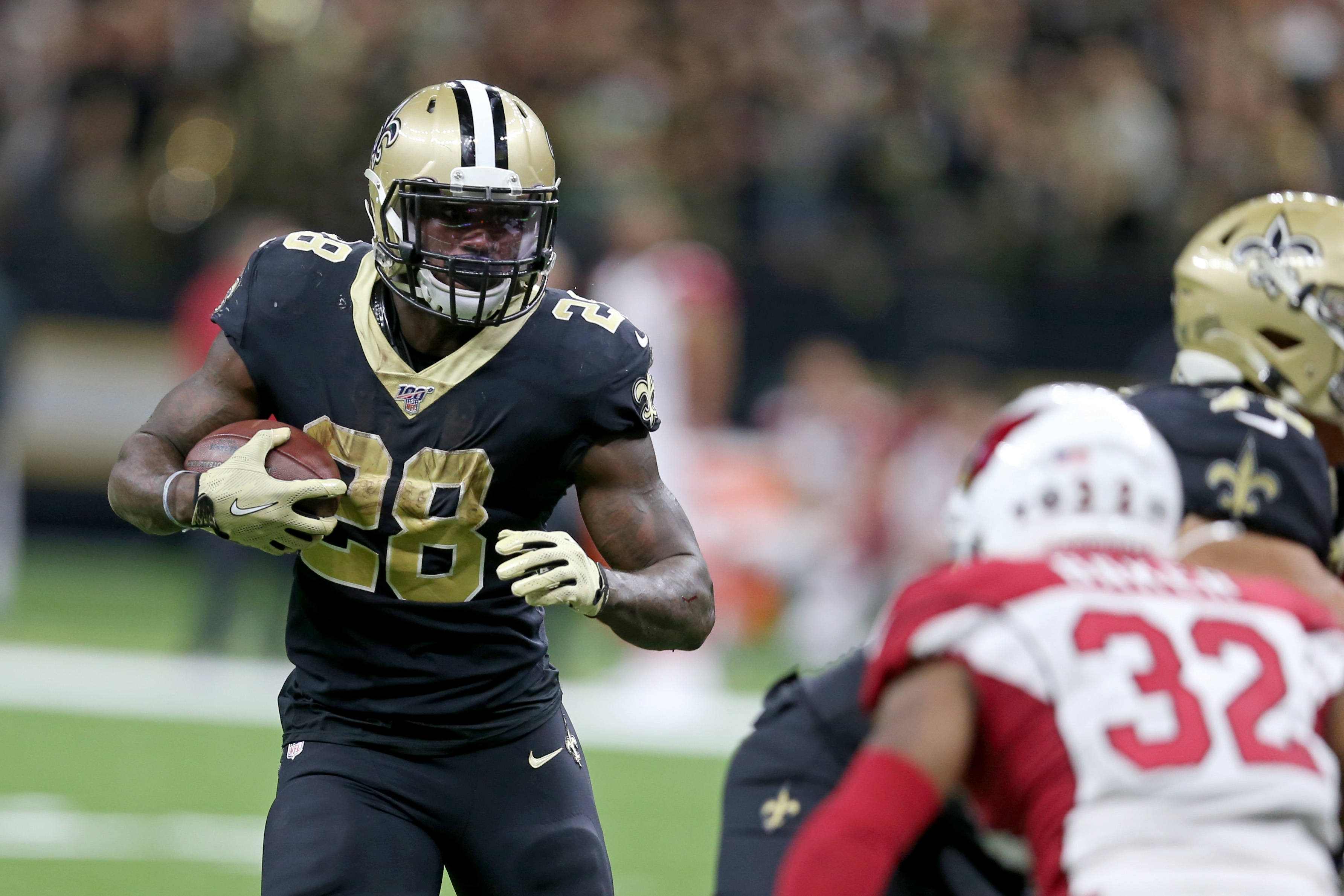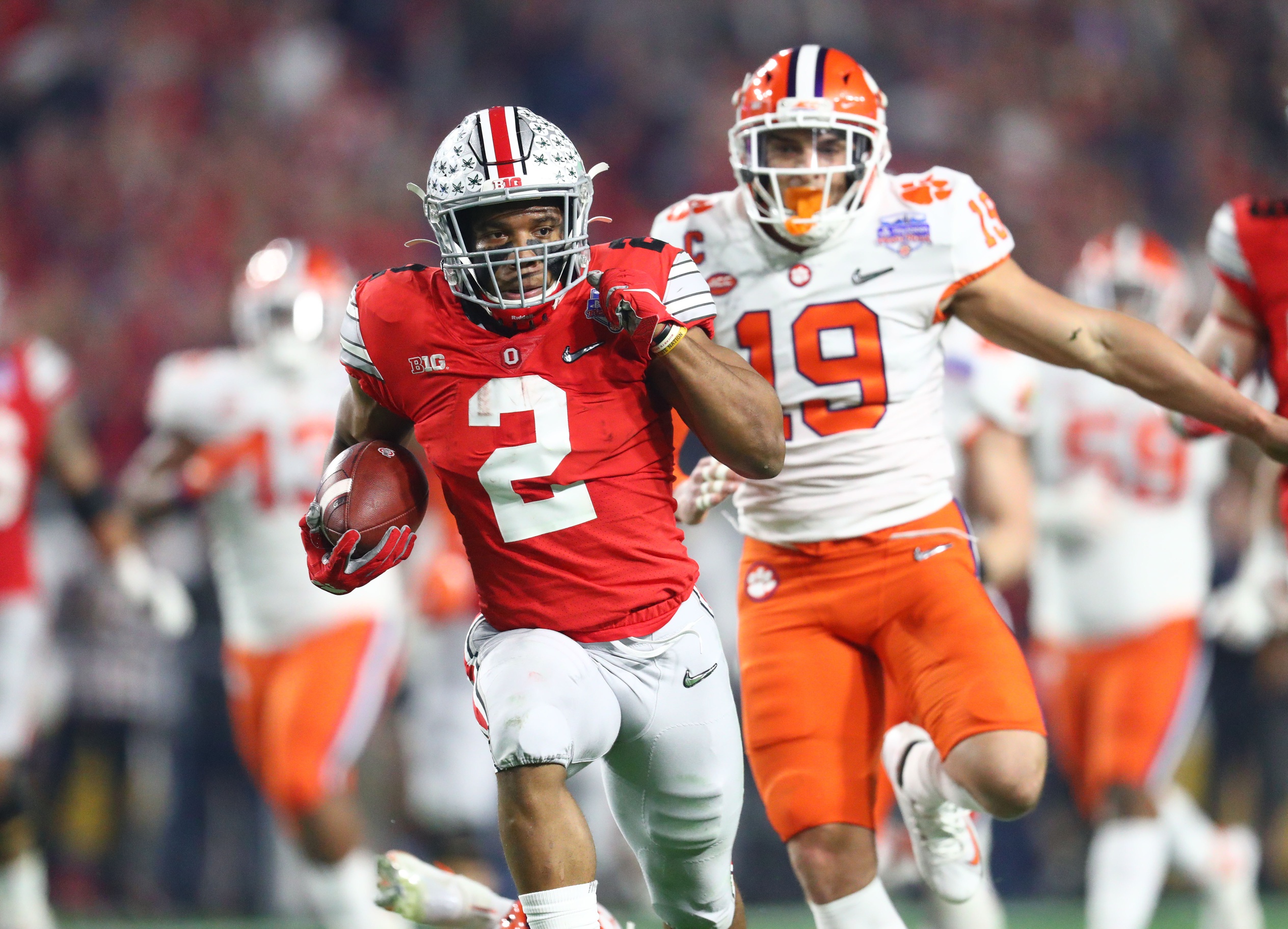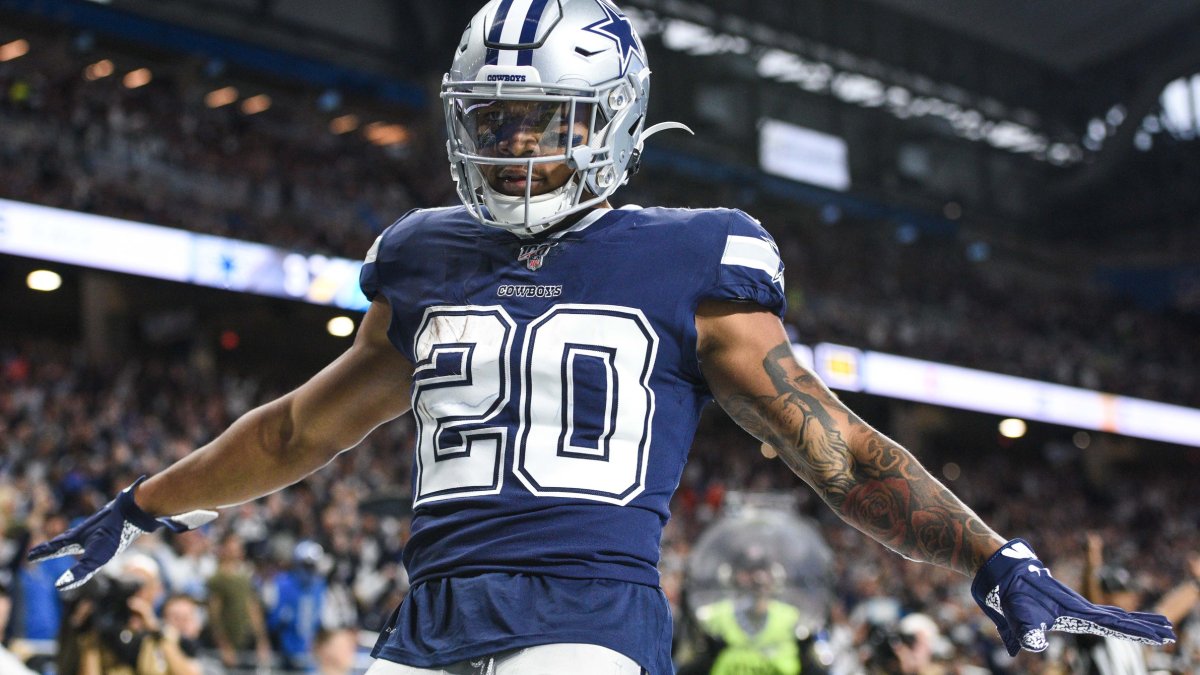Running backs are often considered the most crucial position in fantasy football leagues, which is why they’re selected early and often. Missing out on a running back early can feel like a death knell, but the option to select “handcuffs” as potential home-run swings presents a viable strategy throughout the middle and late rounds.
Subscribe to PFF's EDGE or ELITE subscriptions to get access to the following tools, charts, etc.
– All Premium Article Content
– Fantasy Football Rankings & Projections
– Fantasy Football Draft Guide, Cheat Sheets & Advanced Stats
– Fantasy Football Mock Draft Tool (DraftMaster)
– Fantasy Football Strength of Schedule Matrix
– NFL Player Grades
– NFL Premium Stats
Some fantasy managers even deploy a true handcuff strategy by selecting both the starting and backup running back from the same roster. Others preach that only grabbing others teams' handcuffs is a better strategy for maximizing upside.
Regardless of which strategy you deploy, the following are the five most intriguing handcuff options for fantasy football in 2020.
5. Chase Edmonds, Arizona Cardinals
Edmonds is coming off a season in which he registered only 72 total touches (60 rushing attempts and 12 receptions) and 82.8 total fantasy points, but he still makes the list. He averaged the most points per snap and the most points per touch among all Cardinals running backs in 2019 while also ranking second in missed tackles forced per rushing attempt and first in yards after contact per attempt. In addition to Edmonds' team-leading efficiency metrics, his workload should increase to some degree in 2020 — former starter David Johnson was traded away during the offseason, leaving behind 130 total touches (43 total targets).
Kenyan Drake is the unquestioned starter and will operate as the featured runner. Yet the Cardinals harbor a fantastic situation for any running back, and Edmonds certainly stands to benefit as the handcuff option. The team ranked 14th in goal line plays, sixth in explosive plays rushing (10-plus yards), 25th in run plays versus eight-plus defenders in the box and second in rushing yards before contact per attempt in 2019.
Lastly, the Cardinals’ quarterbacks targeted a player in a running back alignment 97 times in 2019 — that number ranked 17th in the NFL. We should always be targeting running backs with receiving upside, as receptions and goal line attempts are the two most golden opportunities for the position.
PFF’s fantasy projections anticipate an RB67 season out of Edmonds, which ranks relatively low out of the potential handcuff options. One major positive for Edmonds and his teammates is their fourth-ranked running back schedule, according to PFF’s strength of schedule (SoS) metric.

4. Latavius Murray, New Orleans Saints
Among all of the potential handcuff options, perhaps none has a more solidified role than the veteran Murray — he ranked 28th in running back scoring last season (157.2) as one part of a tandem with Alvin Kamara. An injury-plagued season for Kamara may have slightly skewed the numbers, but Murray didn’t trail the starter by much in rushing attempts (171 to 146). Ultimately, Murray was able to scoop 637 rushing yards and five touchdowns as a rusher, while averaging the same yards after contact per attempt as Kamara.
Murray’s usage in the receiving department is also exciting, as he registered 34 receptions on 42 total targets in 2019. With those opportunities, Murray was able to collect another 235 yards and one receiving touchdown, even though he ranked last on the Saints’ roster in yards per route run among their running back group.
We'll want to own some real estate in the Saints' offense, and that can come in the form of starters or even a handcuff option such as Murray. The offense ranked fifth in red zone plays, 17th in goal line plays and 14th in run-play percentage. The team also ranked fifth in the league in targets to players in a running back alignment.
Murray is slated to have a strong workload, regardless of Kamara's status. Head coach Sean Payton has deployed a one-two punch at running back for many seasons. The major positive for Murray is that even though he has a solidified workload now, he could have a monstrous role if anything were to happen to Kamara.
PFF’s fantasy projections expect a strong season out of Murray, ranking him as the RB46. PFF’s SoS metric shows some tough-sledding for the Saints’ running back group, as their schedule is currently ranked as the ninth-toughest in 2020.
3. Alexander Mattison, Minnesota Vikings
Mattison is the quintessential handcuff back, as his current workload in an RB2 role is quite minimal. But his potential volume as a starter would be astronomical within the run-first Vikings offense. In 2019, Mattison totaled 110 touches for 70.4 total points, which placed him at RB60.
While Mattison didn’t rank incredibly highly, he did prove to be an effective player when given the opportunity. Mattison ranked first on the Vikings’ roster in missed tackles forced per rushing attempt (0.18) and second in yards after contact per attempt (3.2). The main issue for Mattison is his lack of receiving usage, as he totaled only 10 receptions on 11 targets in 2019. Not only was he minimally used, but he was out-snapped and out-targeted by special teamer Ameer Abdullah in the receiving department.
Even with his lack of pass-game usage, Mattison could pay off — the Vikings are exactly the type of offense that still grinds out production on the ground. The offense ranked 10th in red zone plays and third in goal line plays. They also ranked eighth in explosive plays rushing (56), second in run-play percentage (48%) and sixth in rushing yards before contact per attempt (1.5)
While Dalvin Cook is the unquestioned starter for the Vikings, Mattison does provide some value as a No. 2 and a lot of potential as one of the few handcuff running backs in a potential smash-spot should something happen to Cook.
PFF’s fantasy projections anticipate an RB54 finish for Mattison in 2019. The Vikings’ running back schedule is merely average, ranking as the 19th-easiest in 2020, according to PFF’s SoS metric.

2. J.K. Dobbins, Baltimore Ravens
We’ve officially reached the first potential timeshare running back. The Ravens employ veteran Mark Ingram, who is coming off a great 2019 season, but they also invested a second-round draft pick in the highly talented Dobbins. While Dobbins is not likely to surpass Ingram on the depth chart, the two could find themselves in something similar to a timeshare, even if it’s slightly skewed in favor of the veteran.
Looking back at Dobbins’ 2019 campaign at Ohio State shows just how dominant of a runner he could be. Dobbins ranked seventh in rushing yards after contact and touchdowns, 22nd in missed tackles forced and 33rd in yards after contact per attempt among running backs with 100-plus rushing attempts. In addition to his work as a runner, Dobbins chipped in 17 receptions on 20 targets.
While we have yet to see how Dobbins will translate to the NFL, he checks all the boxes of a future bell cow. And we haven't even mentioned the fact that the Ravens reside in a class of their own as a rushing attack in the NFL. Offensive coordinator Greg Roman designed and deployed a running game that seemed unstoppable at times last season — they ranked second in red zone plays and third in goal line plays, along with the so many other top marks they require their own chart:
Baltimore Ravens | 2019
| Category | Figure (Rank) |
| Rushing attempts | 596 (1st) |
| Rushing yards | 3,296 (1st) |
| Explosive plays rushing (10-plus yards) | 97 (1st) |
| Run play percentage | 52% (1st) |
| Explosive run percentage | 17.5% (1st) |
| Rushing yards after contact per attempt | 3.0 (5th) |
| Rushing yards before contact per attempt | 2.3 (1st) |
PFF’s fantasy projections expect strong seasons from both Ingram and Dobbins and actually rank them right next to each other as RB31 (Ingram) and RB32 (Dobbins). There’s a good reason for both being ranked so highly, too — PFF’s SoS metric ranks the Ravens’ running back schedule as the fifth-easiest in 2020.
1.Tony Pollard, Dallas Cowboys
Although he only scored 89.2 fantasy points as a rookie, Pollard truly separated himself among all handcuff options with his insane efficiency and playmaking ability. Pollard’s total output slotted him as the RB53, but he also ranked 17th in points per snap among all running backs.
As the efficiency suggests, Pollard was downright awesome on the field. He ranked fourth in missed tackles forced per attempt (0.27) and first in yards after contact per attempt (4.5) among all running backs with 50-plus rushing attempts. In addition to his work as a runner, Pollard proved to be a back worthy of pass-game usage, too — he ranked 11th in YAC per reception (9.3) and 23rd in yards per route run (1.32) among all running backs with 20-plus targets.
The Cowboys are a great offense to target in 2020, as they’re likely to be one of the most productive — if not the most productive — teams on that side of the ball. Looking back to 2019, the Cowboys ranked 12th in rushing yards before contact (584), sixth in explosive plays rushing (60) and sixth in explosive run percentage (14%), though they struggled in registering red zone plays (17th) and goal line plays (25th). Expect both of those numbers to increase significantly in 2020, as the Cowboys continued to invest in their offensive personnel and coaching.
The main downside to Pollard is the health and durability of starting running back Ezekiel Elliott — he’s missed only two games in his four-year career. While Pollard doesn’t maintain a ton of stand-alone value with Zeke healthy and playing, he’s in a potential smash-spot if something were to happen to the latter. And he could continue to factor in as a change-of-pace back and register a decent amount of garbage time work.
PFF’s fantasy projections anticipate an RB55 season out of Pollard, with the expectation that Zeke plays a full 16-game schedule. Either player will have his work cut out, as the Cowboys’ running back schedule ranks as the fifth-toughest in 2020, according to PFF’s SoS metric.



 © 2025 PFF - all rights reserved.
© 2025 PFF - all rights reserved.